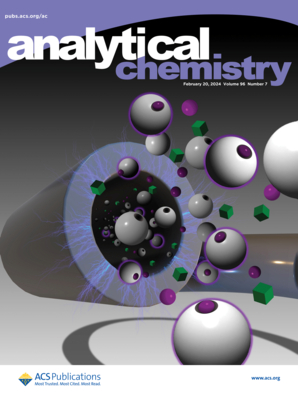Acrolein as an Alternative Broadly Reactive Activity-Based Probe for Activity-Based Protein Profiling of Cysteinome.
IF 6.7
1区 化学
Q1 CHEMISTRY, ANALYTICAL
引用次数: 0
Abstract
Iodoacetamide (IAM)-based probes have established the activity-based protein profiling (ABPP) paradigm; however, their reliance on the SN2 mechanism limits the labeling of all cysteine residues, highlighting the need for complementary probes based on alternative reactions. Additionally, probe design must balance between minimizing probe size and simplifying workflow complexity. As a solution to the above issues, we propose acrolein (ACR), a simple α, β-unsaturated carbonyl compound, as an alternative broadly reactive ABPP probe. ACR possesses sp2-hybridized electrophilic groups that react with nucleophilic amino acids via Michael addition, and its aldehyde group facilitates efficient enrichment. We developed a user-friendly chemoproteomic platform for ACR, enabling the identification of over 28,000 nucleophilic residues across three cell lines. ACR demonstrated its ability to detect reactivity changes in nucleophilic residues under native and denatured conditions and to identify known targets of entacapone. Overall, ACR represents a versatile and efficient tool for studying functional nucleophilic sites, with potential applications in drug discovery.丙烯醛作为一种基于活性的半胱氨酸蛋白谱分析的广泛活性探针。
基于碘乙酰胺(IAM)的探针已经建立了基于活性的蛋白质谱分析(ABPP)范式;然而,它们对SN2机制的依赖限制了对所有半胱氨酸残基的标记,这突出了基于替代反应的互补探针的需求。此外,探头设计必须在最小化探头尺寸和简化工作流程复杂性之间取得平衡。为了解决上述问题,我们提出了一种简单的α, β-不饱和羰基化合物丙烯醛(ACR)作为广泛反应的ABPP探针。ACR具有sp2杂化的亲电基团,可与亲核氨基酸通过Michael加成反应,其醛基有利于高效富集。我们为ACR开发了一个用户友好的化学蛋白质组学平台,能够在三种细胞系中鉴定超过28,000个亲核残基。ACR证明了它能够检测天然和变性条件下亲核残基的反应性变化,并识别恩他卡彭的已知靶标。总的来说,ACR是研究功能性亲核位点的一种通用而有效的工具,在药物发现方面具有潜在的应用前景。
本文章由计算机程序翻译,如有差异,请以英文原文为准。
求助全文
约1分钟内获得全文
求助全文
来源期刊

Analytical Chemistry
化学-分析化学
CiteScore
12.10
自引率
12.20%
发文量
1949
审稿时长
1.4 months
期刊介绍:
Analytical Chemistry, a peer-reviewed research journal, focuses on disseminating new and original knowledge across all branches of analytical chemistry. Fundamental articles may explore general principles of chemical measurement science and need not directly address existing or potential analytical methodology. They can be entirely theoretical or report experimental results. Contributions may cover various phases of analytical operations, including sampling, bioanalysis, electrochemistry, mass spectrometry, microscale and nanoscale systems, environmental analysis, separations, spectroscopy, chemical reactions and selectivity, instrumentation, imaging, surface analysis, and data processing. Papers discussing known analytical methods should present a significant, original application of the method, a notable improvement, or results on an important analyte.
 求助内容:
求助内容: 应助结果提醒方式:
应助结果提醒方式:


